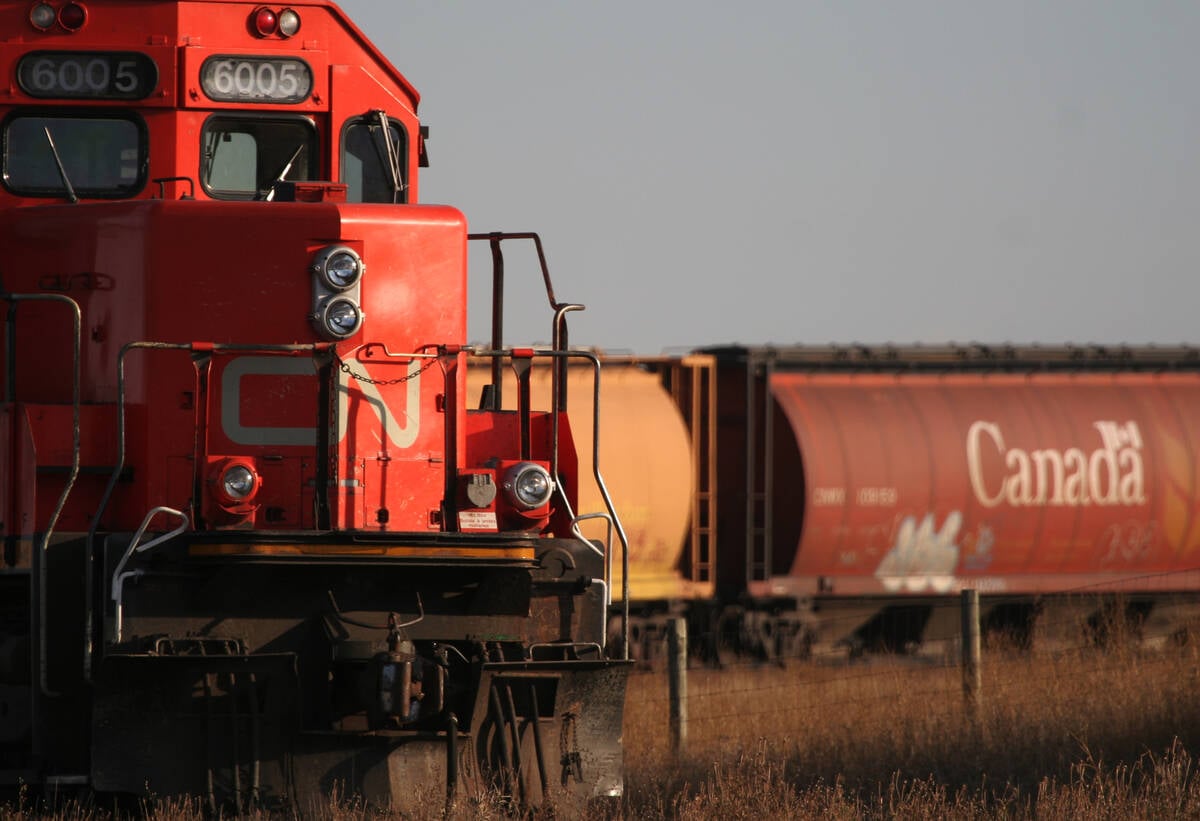WHISTLER, B.C. — Canada’s pulse and special crops industry is collaborating with Canadian National Railway on ways to improve the reliability, speed and efficiency of rail service.
Murad Al-Katib, president of the Canadian Pulse and Special Crops Trade Association, said the industry is engaging in an “active, formalized collaboration” with the railway.
Other coverage from the 2025 Pulse and Special Crops Convention:
- VIDEO: 2025 pulse and special crops convention kicks off in Whistler
- Traders forecast record lentil yields for Canada
- High pea yields shock farmers
- Chickpea harvest forecasts see big disparity
- Geopolitics can change trade routes
- U.S. market can’t easily be replaced
The two parties have established a framework and working groups to address challenges in both the containerized and bulk movement of the commodities.
Read Also

Stacking Canada up on gene editing livestock
Canada may want to gauge how Argentina and other countries have approached gene editing in livestock and what that has meant for local innovation.
“We reached out with an olive branch, and the branch was grabbed and immediately we were pulled together,” he told delegates attending the 2025 Pulse and Special Crops Convention.
Al-Katib said CN has given the organization “unparalleled access” to its senior leadership team.
One of those senior leaders spoke to delegates attending the convention.
Sandra Ellis, vice-president, bulk, at CN, said she wants to hear feedback from the sector on what the railway is doing right and what it is doing wrong.
“That’s why I’m here today because we need to reopen channels of communication,” she said.
“Our ask is, talk to us directly, not through editorials in the newspapers, not through forums.”
Ellis said CN is constantly investing in infrastructure and equipment to improve efficiency.
The company has added 25 siding projects and 200 miles of double track over the last decade.
It has added 4,250 new high efficiency hopper cars since 2018 and 300 new locomotives.
The railway is moving 75 per cent more grain in the peak weeks of the fall and winter period than it was about 15 years ago.
The Zenardi Bridge Expansion Project will add another bridge and two more tracks across the water at the Port of Prince Rupert.
“We do these things once every 50 years,” said Ellis.
Other improvements in rail service have come from tweaking the way they operate.
The company had been using contractors to do engineering work, such as filling potholes along the tracks. However, it recently decided to do more of that work in-house with its own employees.
“What we have found is the work is getting done on time, better and more efficiently,” said Ellis.
CN is not pleased with Ottawa’s new hours of service legislation.
New rules on rest periods and sick days mean CN employees are allowed to work less than they were previously. A conductor might now only work 160 days a year.
“It’s just not a work environment that is effective,” she said.
Al-Katib said the government needs to recognize that rail is an essential service in Canada.
He said the government has made trade diversification a top priority, but that will ultimately be driven by modernization of Canada’s transportation infrastructure and regulatory changes.
Al-Katib wondered what can be done on that front.
“We have to level the playing field between Canada and the U.S.,” said Ellis.
Capital is more expensive to deploy in Canada because the U.S. has more favourable depreciation rules and a less convoluted approval process.
Al-Katib also wondered if there is a future for grain movement through the Port of Churchill.
“There could be,” said Ellis.
“You’d have to have a shipper that wants to go there and you’d have to have a port connection that makes sense.”
















